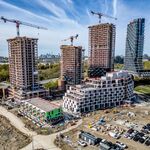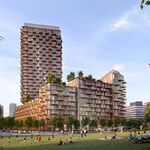TheTigerMaster
Superstar
1) That would complicate the fare collection system substantially. Someone boarding at Vaughan Centre and traveling to Steeles West only pays the "905" fare. If he travels further south on the same train, how do you make sure that he pays the "416" fare as well? Have the train sit for 5 or 10 min at the Steeles West station, and send fare collectors through each car?
2) Double fare will apply to reverse commuters as well: someone living within 416 (and paying Toronto's taxes) but traveling to work at VCC will have to pay double fare.
A proper way to make the region contribute to TTC is to collect a region-wide transit tax, and distribute it in a way that compensates the TTC for serving non-Torontonians.
I doubt that a region-wide transit tax will work because of the politics involved. I suggest that the City of Toronto sends every Torontonian a Presto card that knows where their residence is located. If someone lives in Toronto and uses the Presto they'll pay the regular $3.00 fare. If you live outside of Toronto and use the Presto card you get charged a little more.
And the double fare wouldn't apply in reverse. The TTC is Toronto's transit system and I believe that Toronto still retains control of fares. So if a Torontonian travels to Vaughan on the subway the TTC wouldn't have to charge extra.
Last edited:




